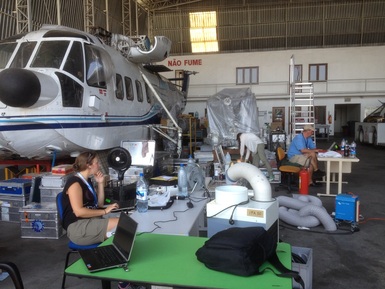 Flight preparations in the "lab/office" in the hangar
Flight preparations in the "lab/office" in the hangar The weather patterns in Amazonia had been pretty unusual over the last few days. Even in the “dry season”, there are usually quite frequent showers and thundershowers in central and northern Amazonia – the rain forest needs a steady supply of rain. But lately it has been quite dry over almost the entire Basin, because a high pressure system has parked itself over the region. This has several consequences, none of them good for us: The high pressure suppresses the deep convection that produces the tall clouds, which we are here to investigate. The lack of rain prevents the removal of aerosol particles from the atmosphere, so that it becomes increasingly difficult to find areas with very clean air. And finally, the circulation around the high swiftly moves the dense smoke from the fires in the southern part of the Basin out in a southeasterly direction, away from us und in the direction of São Paulo. This makes it hard for us to find the other extreme: very, very dirty air. Under these circumstances, flight planning requires a lot of information from satellites and models, and also a good amount of luck.
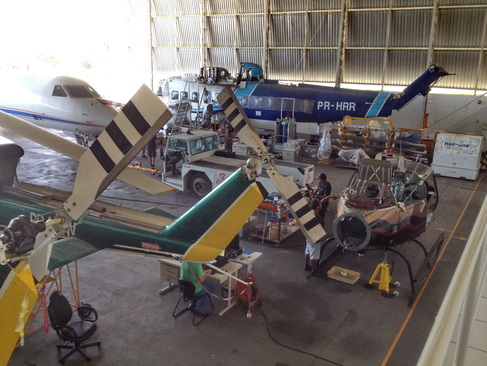 The hangar is pretty crowded!
The hangar is pretty crowded! The cleanest air and the most rain in Amazonia is usually found in the northwestern-most part of the Basin, in the region of São Gabriel da Cachoeira. This place is reputed to have no dry season – it supposedly always rains there. The weather forecast models had also suggested the best chance for convection in the western part of Amazonia, near the border to Colombia, and the air pollution models predicted clean air. So, that’s where we decided to go.
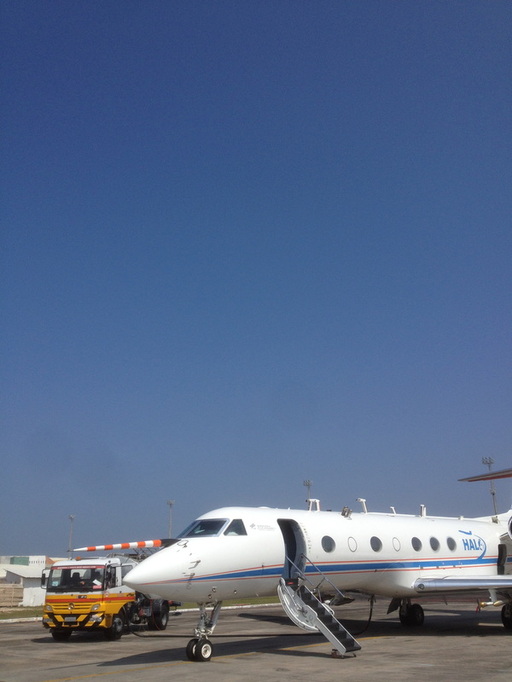
The morning did not start very promising: Until about 0900L, the sky was clear blue without any cloud at all! It took until about half an hour before our takeoff at 1426Z (1026L) for the first little cumulus clouds to pop up. We climbed through a pretty hazy layer that reached up to about 10,000’. Reassuringly, some clouds already poked up through this layer, and eventually we found ourselves flying over a good crop of mid-sized cu’s. We descended into the boundary layer east of São Gabriel and found air as clean as one can hope for in the dry season, with about 700 particles per cc.
Left: A VERY blue sky in the morning!
Left: A VERY blue sky in the morning!
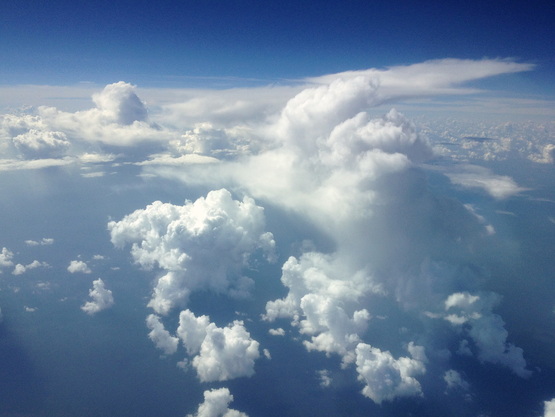 The cloud with the mature anvil is on the right, the one that is still actively growing in the back left
The cloud with the mature anvil is on the right, the one that is still actively growing in the back left We sampled lots of mid-sized clouds along the way, at altitudes up 14,000’, and began our systematic cloud profiling at 1638Z. As we kept climbing to higher altitudes, we were happy to see that the clouds were climbing along with us, and eventually we found ourselves at 37,000’. Here we could sample three clouds, one that was still actively growing, another that was just in the process of topping out, and a third that had already converted to an outflow anvil.
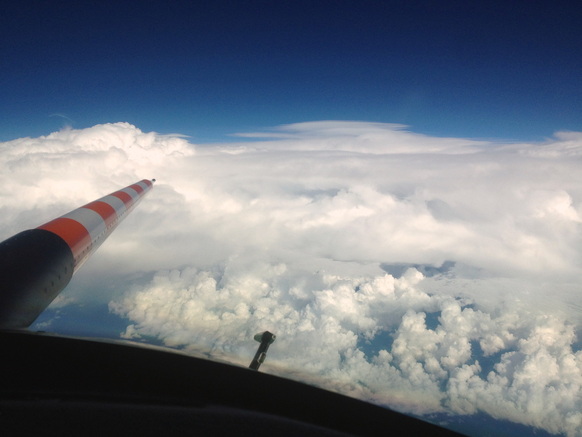
This concluded our mission goals and we headed back towards Manaus. Luck had been with us! On the way back, we had to detour around a huge cloud complex that we estimated to reach above 50,000’. This shows that the few thunderstorms that can break through the inversion barrier can then develop into real monsters! We landed again in Manaus at 2113Z.
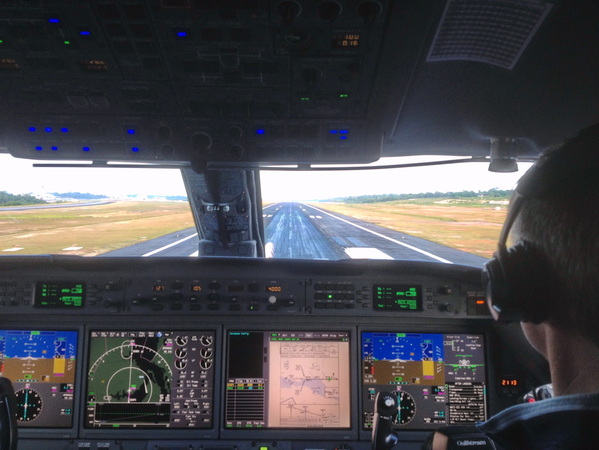
Landing in Manaus
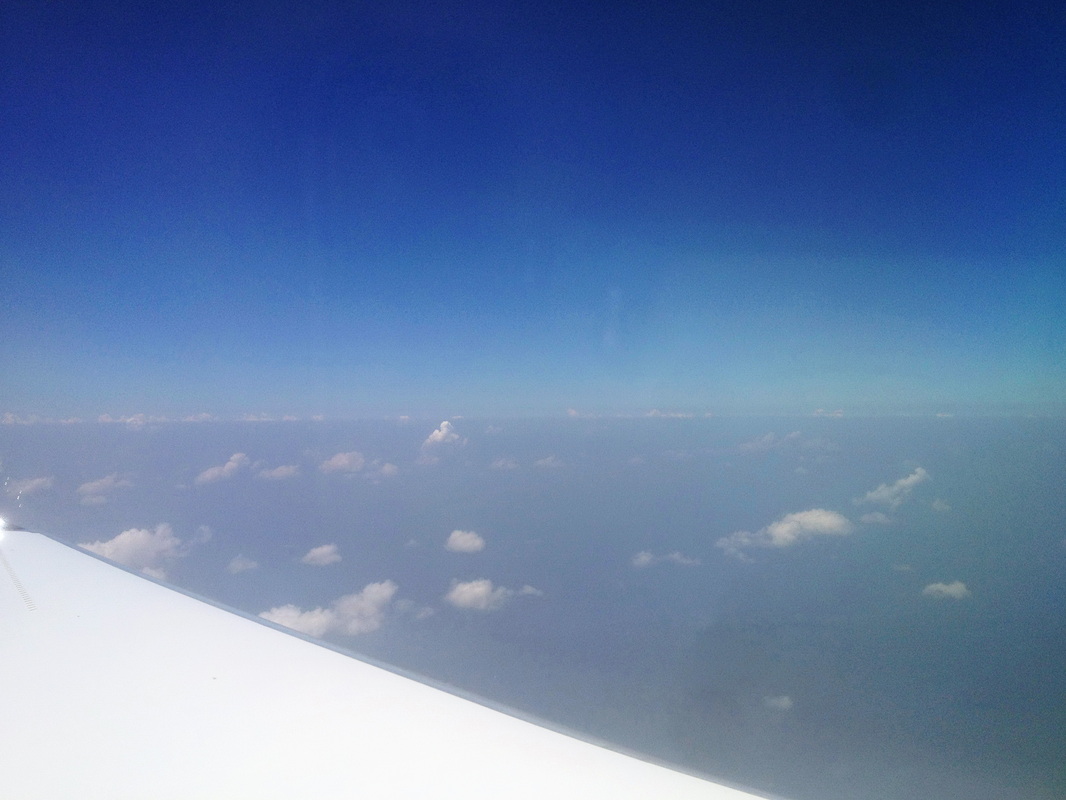
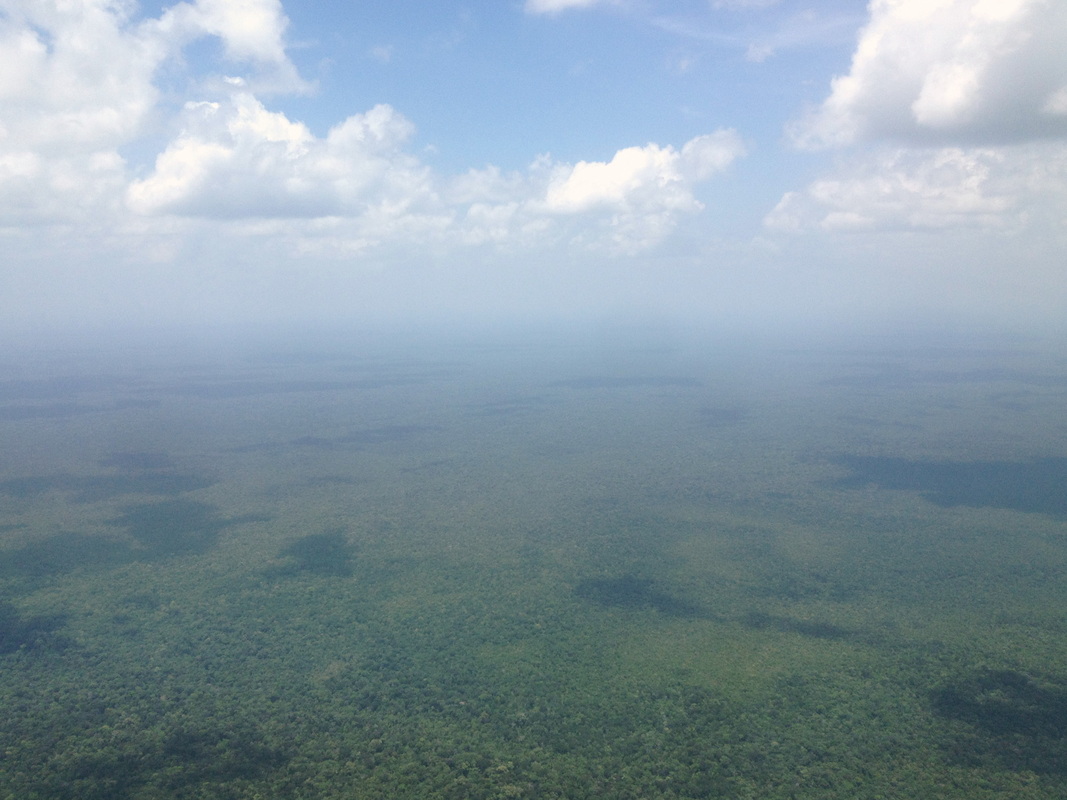
 RSS Feed
RSS Feed